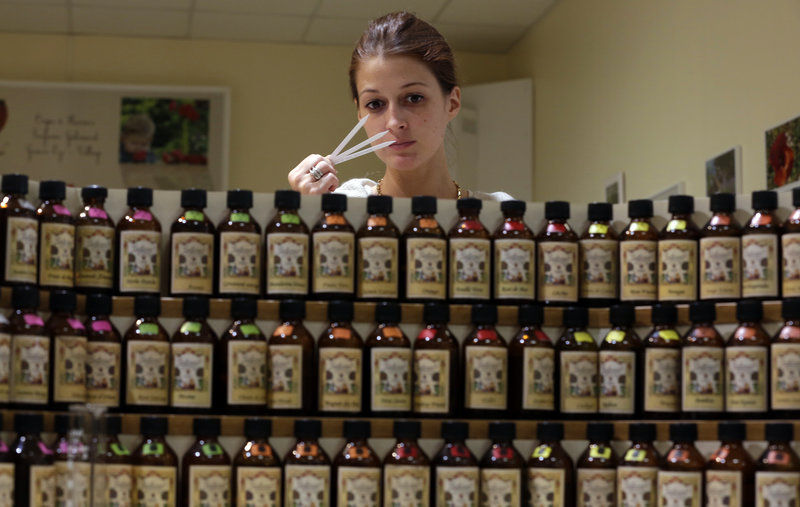The next time you argue with a friend about the whiff of cilantro in your stir-fry that he finds disgusting, blame his genes.
All of us inhabit our own flavor world that is highly dependent on our genetic blueprint for being able to smell certain odors, according to two studies a New Zealand research group published online Thursday in the journal Current Biology.
The perception of flavor while eating includes what your taste buds can detect — sweet, salty, bitter, sour and umami (often called savory) — but they play a meek supporting role to your sense of smell.
That sensory experiences of food differ from person to person has always been known anecdotally. Think of strong, hoppy beer or black coffee that some find revoltingly bitter but others can drink like water. But the researchers wanted to know how much of that variability is genetically hard-wired.
They had 187 people smell 10 different compounds, taking note of who could smell them at a certain concentration level and who couldn’t. They sequenced each person’s DNA, scanning their genomes to pick out parts that could possibly explain the variations in smell sensitivity.
Out of 10 scents tested, four had a strong genetic basis — malt, apple, blue cheese and violet. They were also independent of one another, so even if you have a super-nose for blue cheese, you might fall short when it comes to smelling violets.
One study found a single gene change linked to the floral scent found in violets. The other study more generally hunted down spots within the genome connected to three additional food-related smells.
Odors typically consist of molecular building blocks called aroma compounds. For example, while blue cheese gives off a whole bouquet of aromas, 2-heptanone is the chemical that really “gives blue cheese its blue cheesiness,” said lead researcher Richard Newcomb of the New Zealand Institute for Plant and Food Research.
The roof of our nasal cavity has a patch of millions of special neurons, each one covered with olfactory receptors that bind to odor molecules that travel through the air. But each neuron has a single type of odor receptor, meaning it can detect only smells that have the right structure.
For comparison, color vision only has three types of receptors, each corresponding to different range of the color spectrum; our nose has 400 types, each with a matching olfactory receptor gene within our DNA. Any variation in those genes will affect our sense of smell.
Send questions/comments to the editors.



Success. Please wait for the page to reload. If the page does not reload within 5 seconds, please refresh the page.
Enter your email and password to access comments.
Hi, to comment on stories you must . This profile is in addition to your subscription and website login.
Already have a commenting profile? .
Invalid username/password.
Please check your email to confirm and complete your registration.
Only subscribers are eligible to post comments. Please subscribe or login first for digital access. Here’s why.
Use the form below to reset your password. When you've submitted your account email, we will send an email with a reset code.